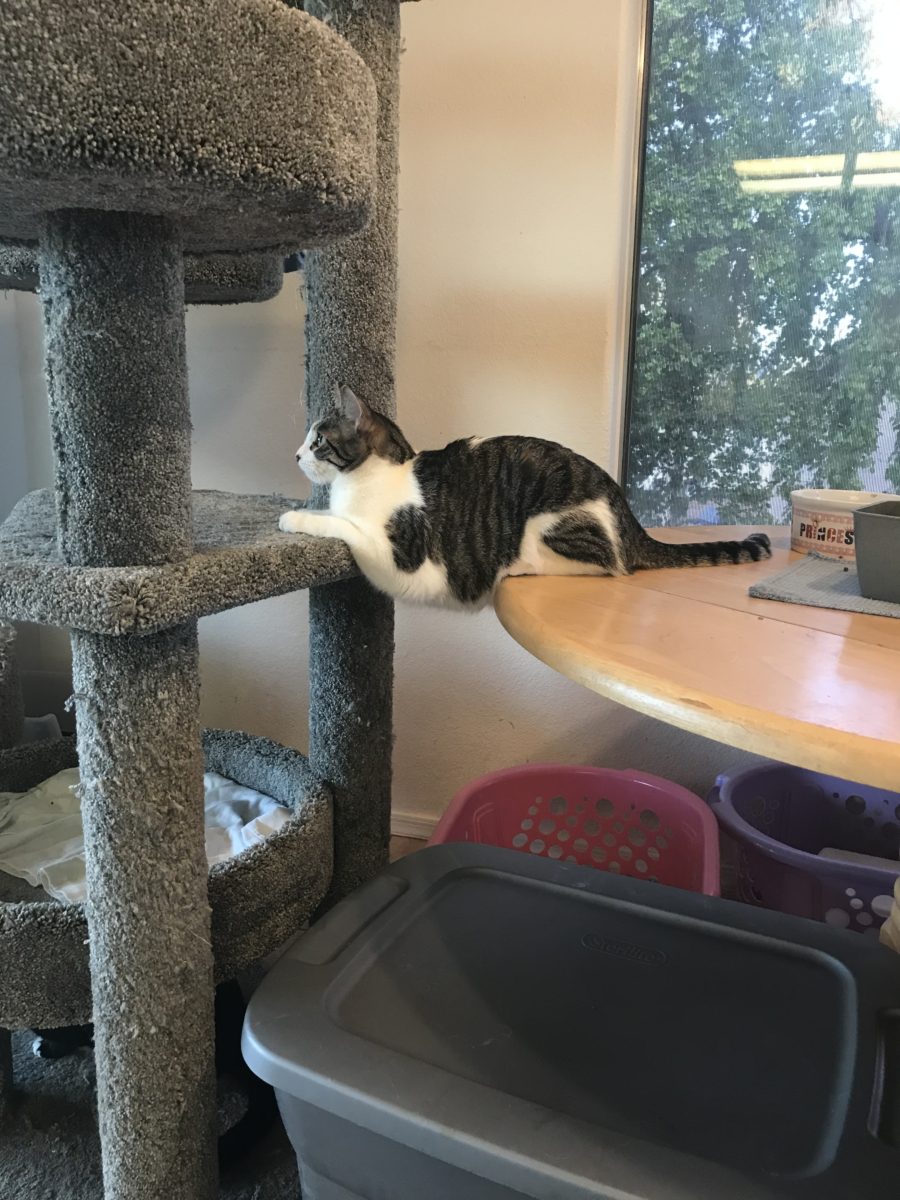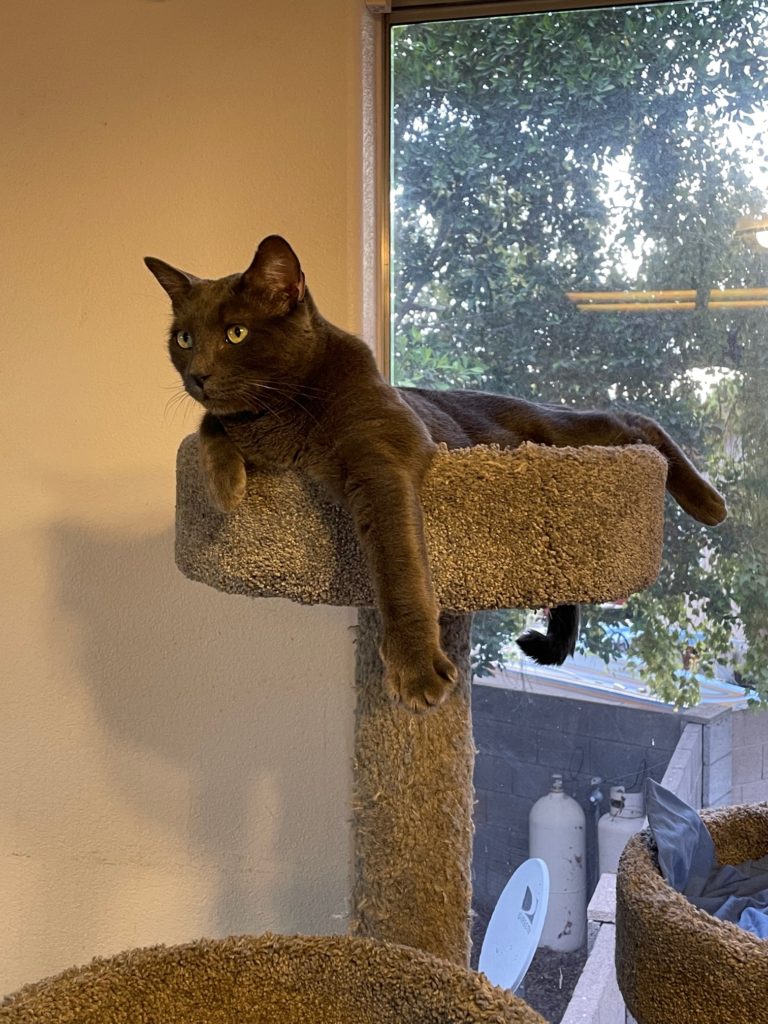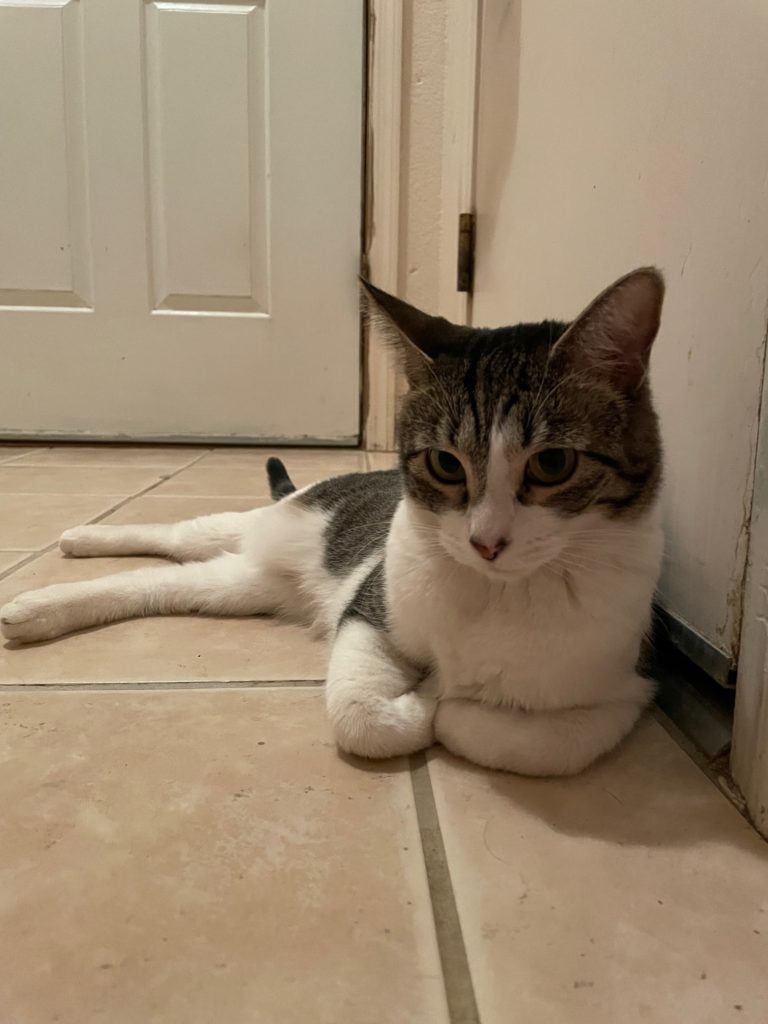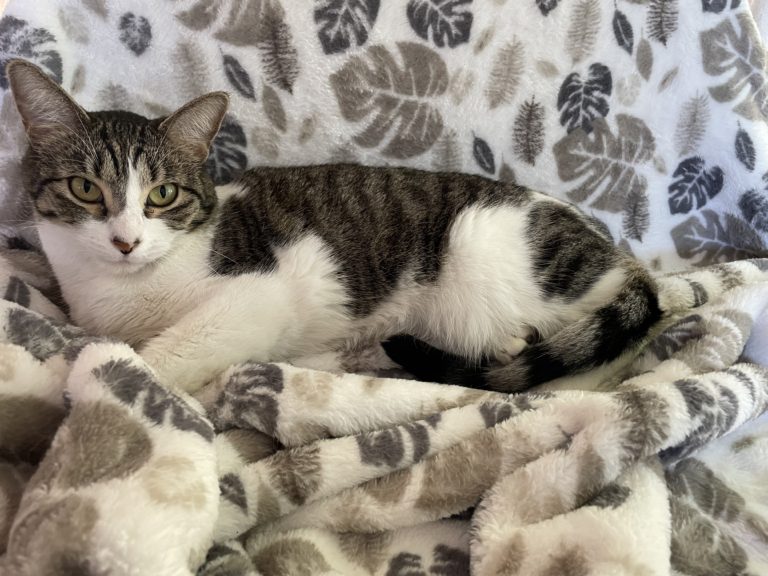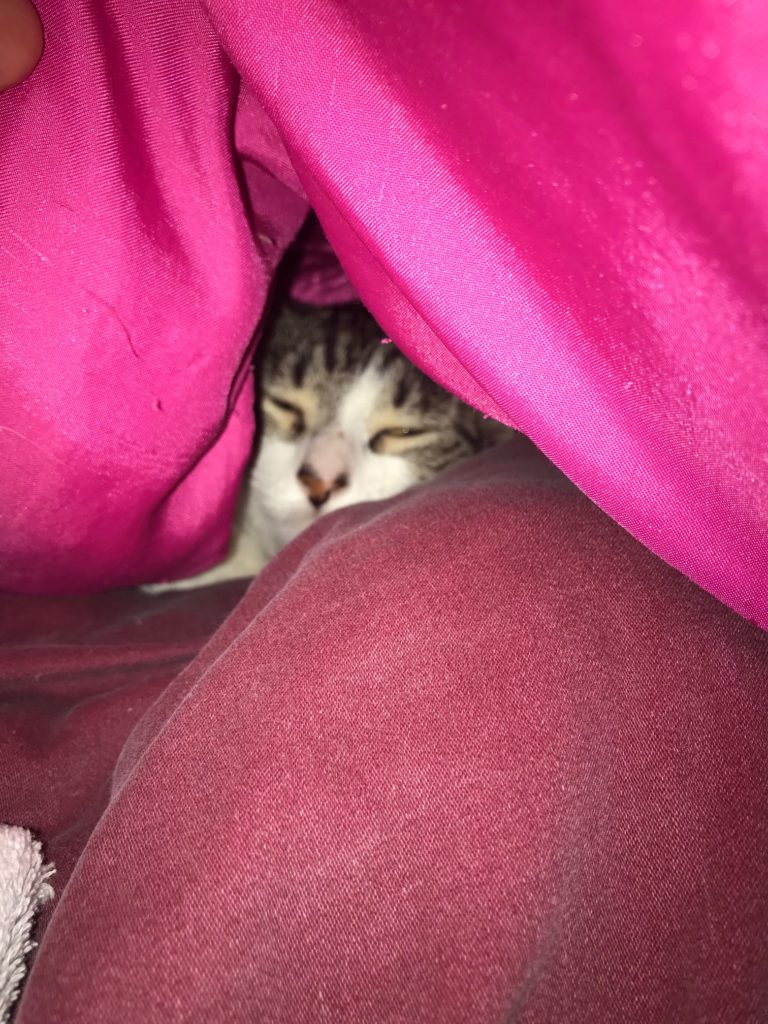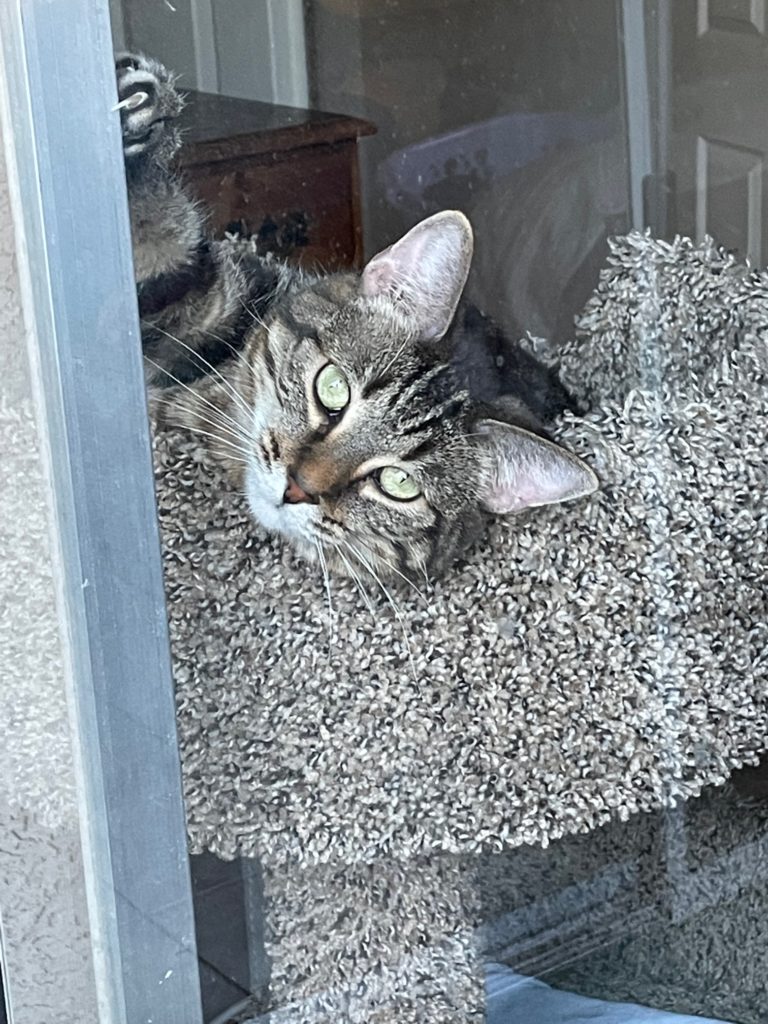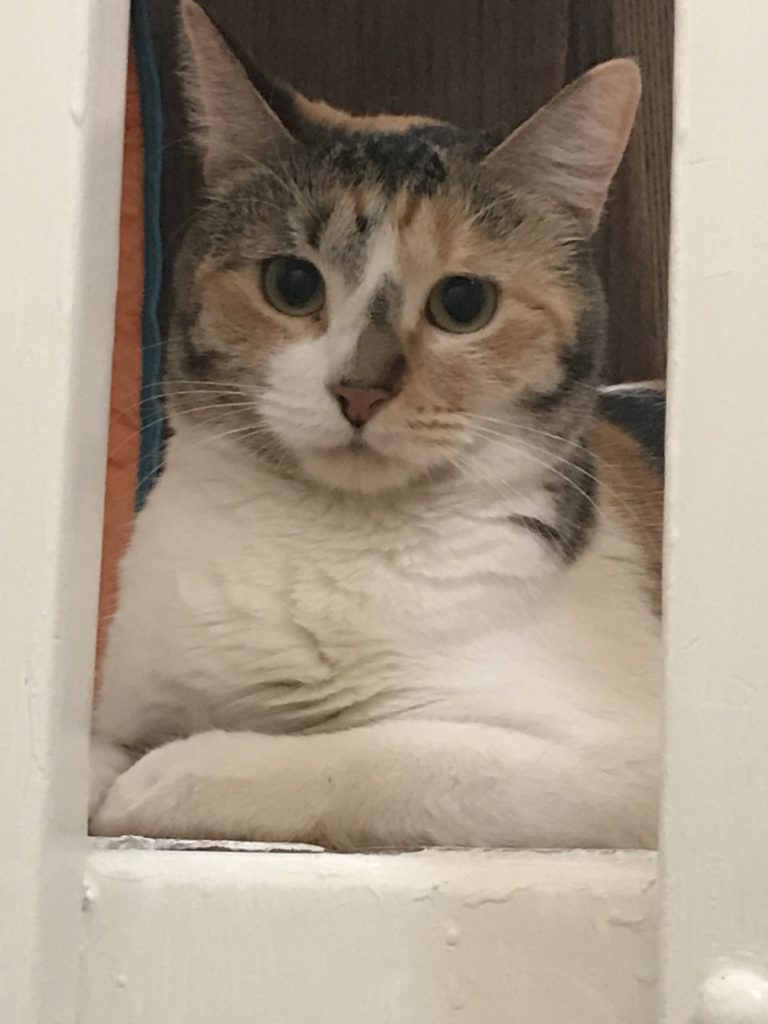What is a Bridge Cat?
*This post may contain affiliate links for which I earn commissions.*
When you hear the words bridge cat you probably imagine something like this…
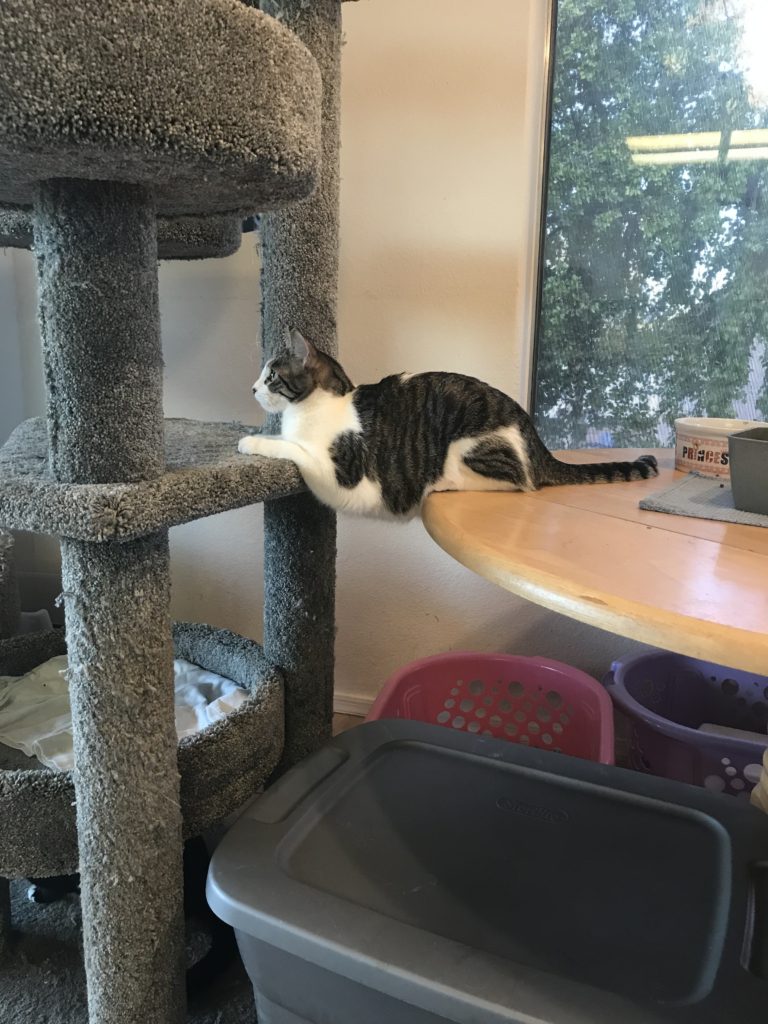
Although Squish does look like a bridge, she is not a “bridge” cat. I made up this term some time ago. It describes two different types of situations. A bridge cat could be an adult cat that takes over caring for young or baby kittens when mom is no longer in the picture. This adult has NO previous connection to the kittens and requires a bit of a thoughtful introduction.
We have rescued many tiny babies where the mom cat never returned. Some of these tiny ones needed to be bottle fed and stimulated to go to the bathroom just like mom would do. Another important function by a mom cat besides feeding, protection, etc. would also include body warmth and teaching her babies basic life skills. These tasks can be even more difficult if we have only one single tiny kitten. In these circumstances we would rely on stuffed animals and blankets for warmth and we would have to teach the kitten as best we could.
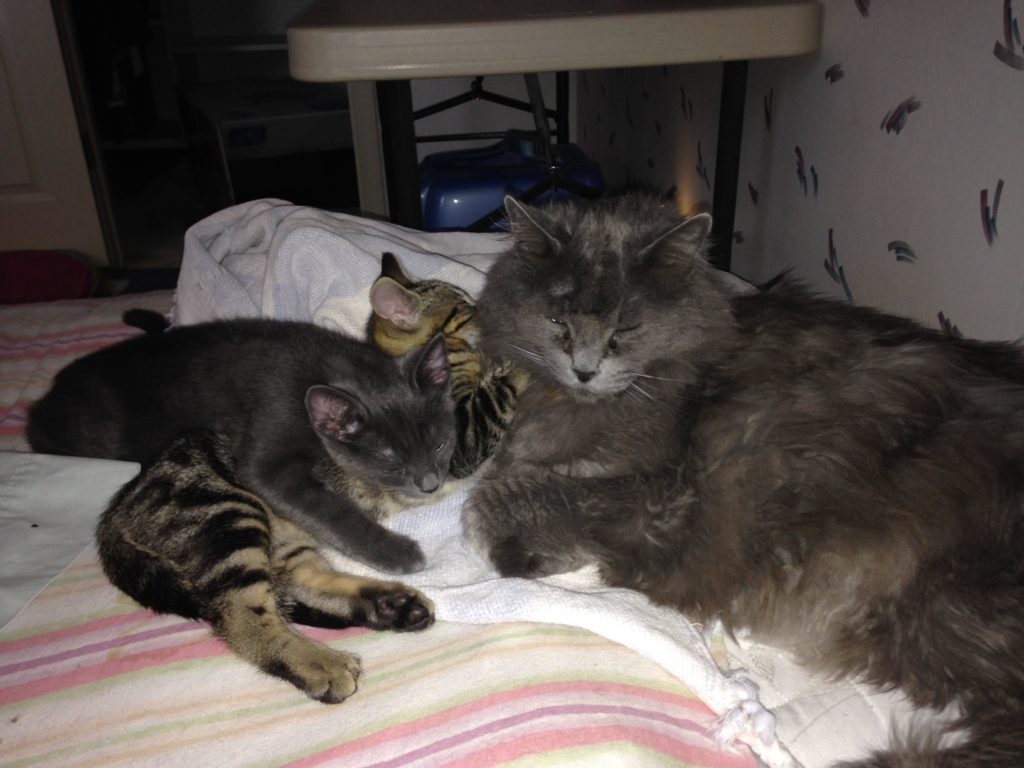
There have been numerous occasions that we had a small kitten or two and a single male cat that we rescued separately that would take them under his wing and help them. This is Malibu with Marlina and Grayson. They have zero in common other than we rescued them around the same time. Malibu was not able to stay at his old home any longer. I believe the original owner had passed away and there was no one in their circle who could or was willing to care for him. While we were working on finding him a great home we had also rescued three young orphaned kittens. Malibu became a really big help with caring for these guys and teaching them the ropes. He became so attached to Marlina that those two were eventually adopted out together!
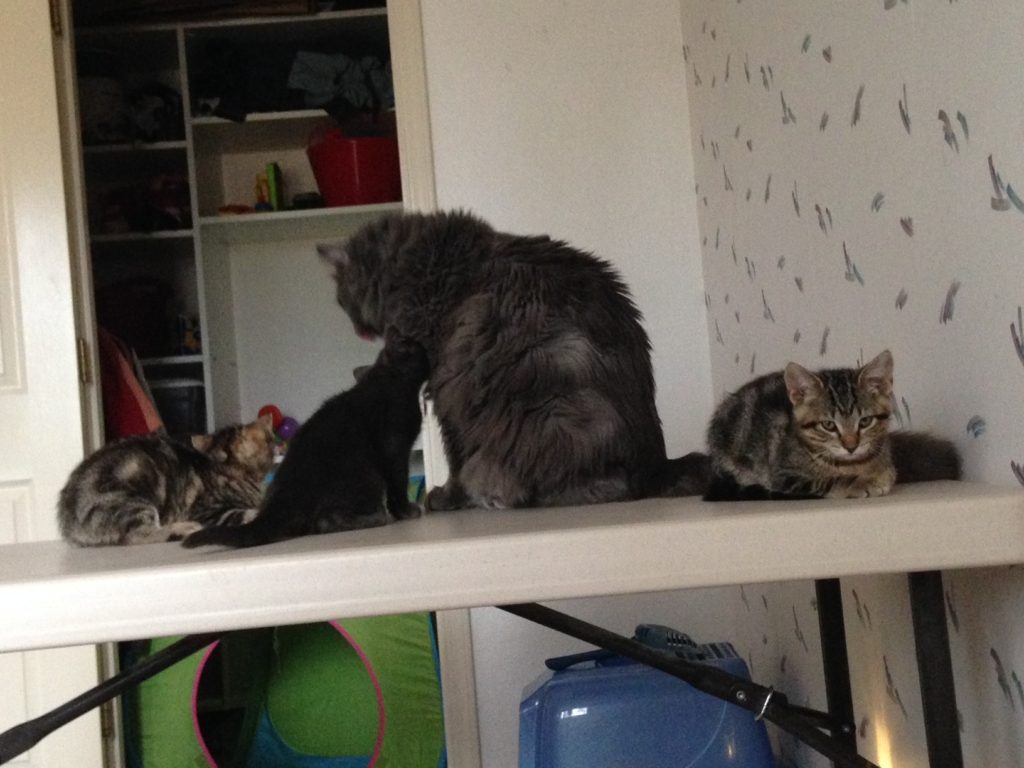
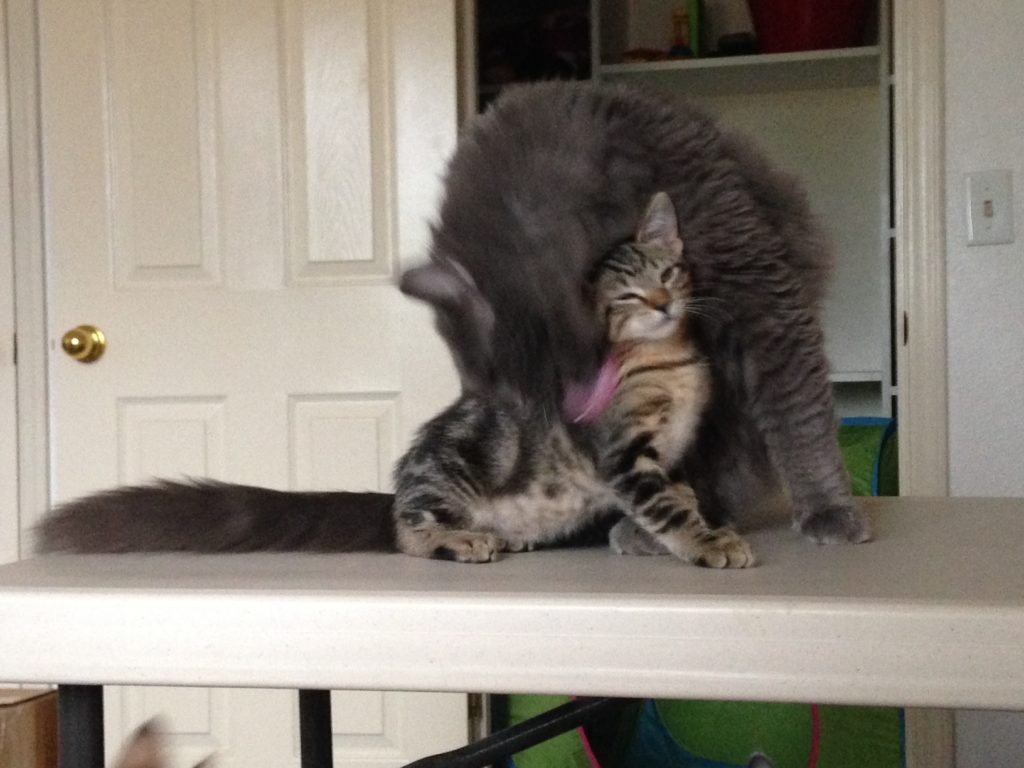
The really young kittens seem to always thrive and develop much more quickly when there is a young or adult cat available to interact with them. I don’t know why, but male cats usually seemed a better fit for this type of thing than females. We did have some females that worked well, but the males just seemed a better match the majority of the time. We even tried off the street loner males and it usually worked. We were always careful with introductions first of course.
This strategy also worked in reverse for the adult cat. Sometimes the kittens were fine on their own, but the adult cat was very shy, withdrawn, or not very trusting of us humans. We could put the kittens in the room with them and then go in from time to time to play and interact with the kittens in front of the adult. Eventually, the shy adult would get more comfortable seeing the tiny helpless kittens not be harmed by the scary humans.
We would also use this strategy to work with semi-feral colonies. If there was a at least one cat that was pretty friendly in a feral colony we would consider rescuing the colony versus doing a trap/fix/release or TNR plan. We could use the friendly cat to “bridge” between us and the other less friendly cats in the group. We also use this technique with just random groups of cats or kittens that we just happened to rescue around the same time. Since we only have so much room this approach was sometimes out of necessity due to lack of space. This also required observation to get a feel for personalities and careful introductions.
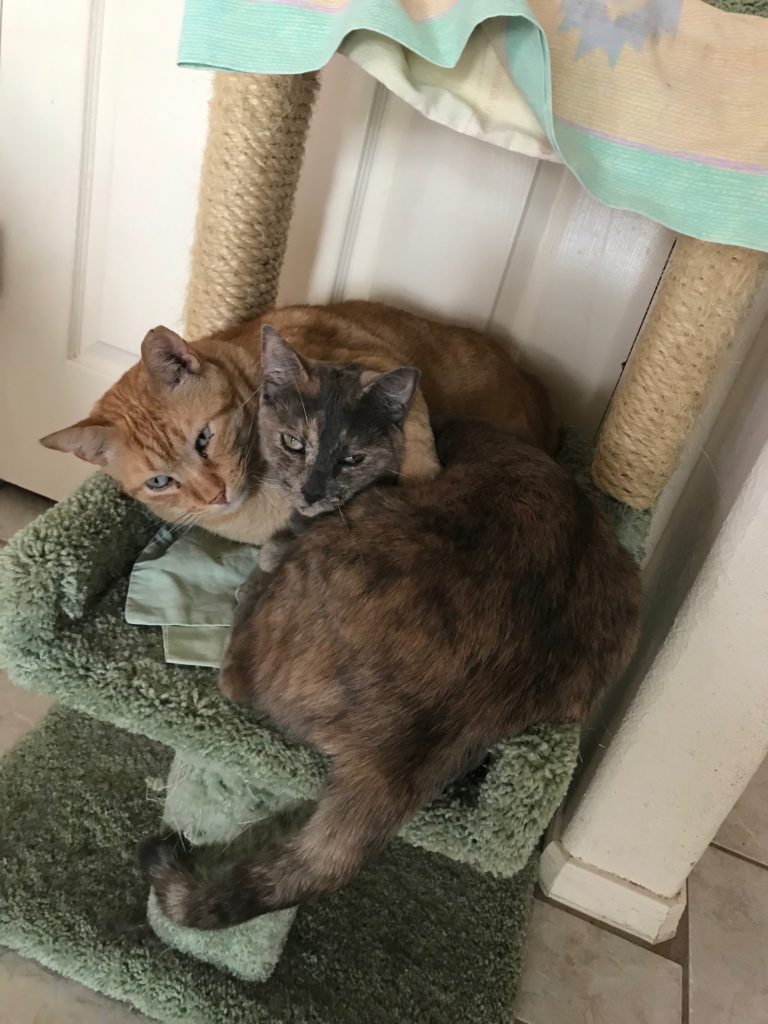
Morris is the leader of a semi-feral colony we took in awhile back. He clearly was a house cat that had gotten separated or deserted by his human family. Somehow he became in charge of this colony which originally was about 9 adults and 3 kittens. They were located around the outside of a large medical building with a lot of bushes and trees and was located adjacent to an empty field. Unfortunately, it was also near two very busy roads. Initially, we were going to do a trap and release strategy which we had done a few times before working with the local chapter of the Animal Welfare League. The goal in these scenarios was to trap unfixed feral cats and get them spayed or neutered. Then after a day of observation we would release them back into their territory where they could live on, but not keep reproducing. If there were any young kittens in the group we would usually keep them and get them adopted out later on.
It would be very difficult or impossible to get feral cats adopted out, so this was the next best option. If the territory was not very safe we would try to locate the colony to a better location. In this case, while we were waiting for the Animal Welfare League for approval and equipment we were giving these cats food and water at night and keeping tabs on them. Soon we realized that a couple of the cats had been hit by cars and the manager of the building had instructed the landscapers to “get rid of the cats”. Since we could not wait any longer and because Morris seemed pretty friendly we decided to just trap them, fix them, and take them into our home. This took a few nights to get them all, but we ended up seven total including the three kittens. One of the females we did not get fixed right away because she was pregnant.
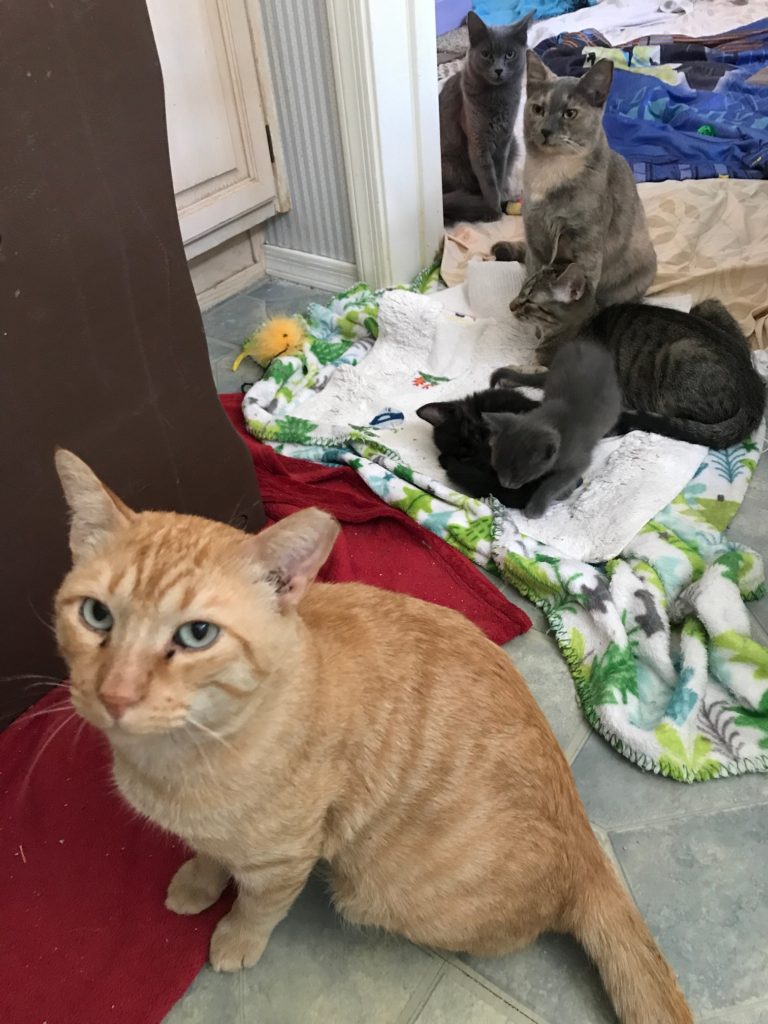
Morris became our bridge cat to the rest of the colony. It did take some time and we are still working on this group, but we have three cats that roam around and interact with us. One who interacts some, And three that are still pretty shy, but not scared, or hiding, or running away.

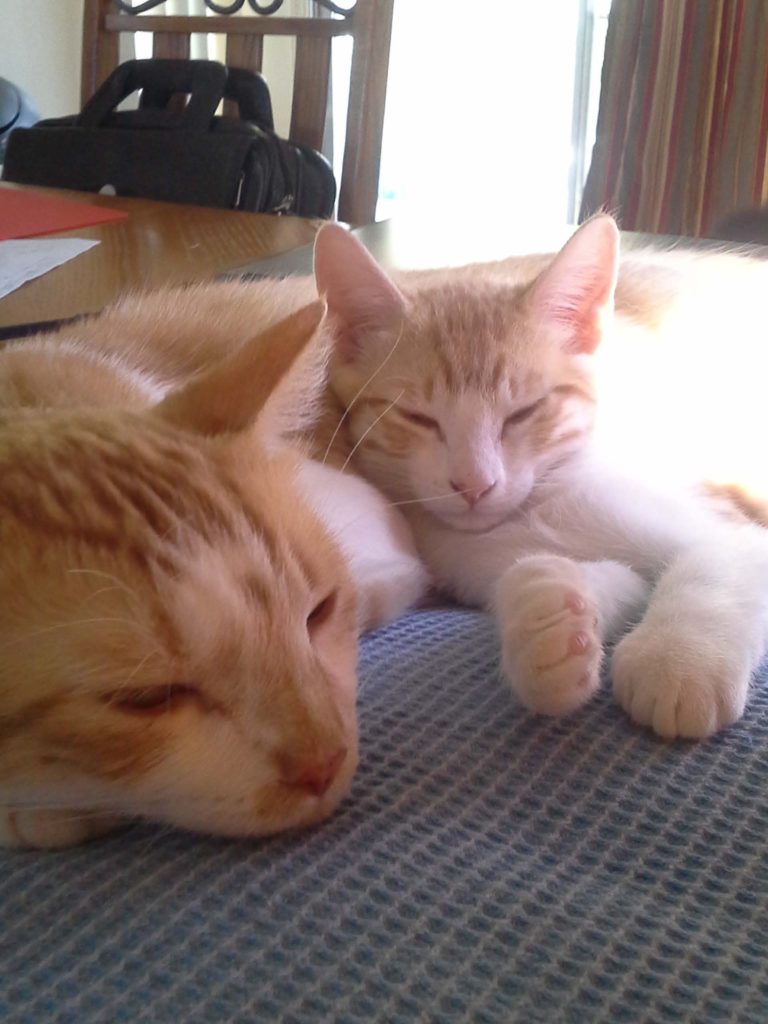
Here we used our kittens Mango and Monkey as bridge cats for a male street cat Mickey. He started out pretty skittish and eventually became very lovable.
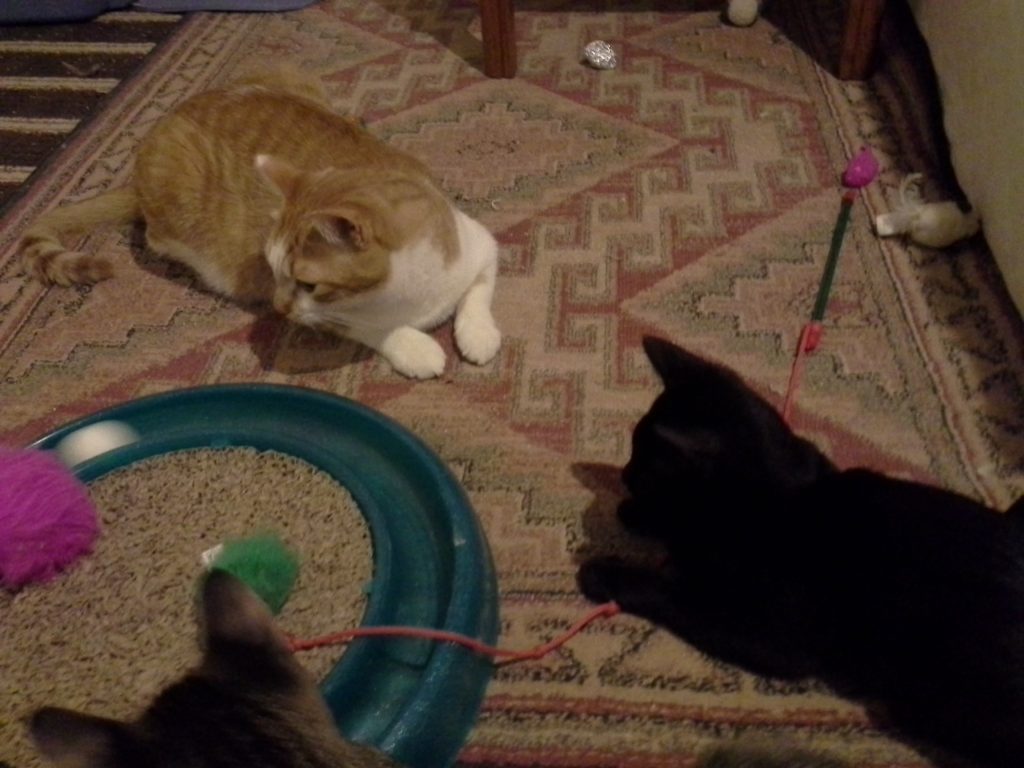
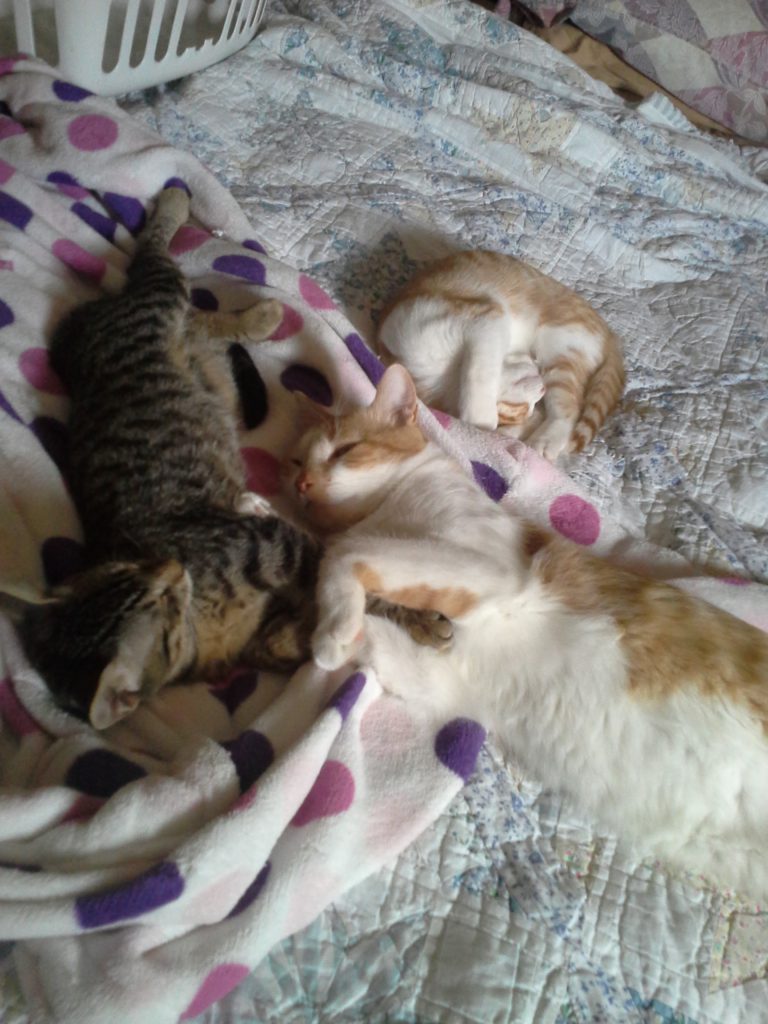
It is so gratifying to take a cat that is not really adoptable and being able to convert them to adoptable and then finding them a loving home. This approach takes a lot of time and effort, but it’s so worth it later on. The bonus is being able to use other cats or kittens to do most of the heavy lifting. It’s always worth trying since you never know for sure how it will turn out.
See ya around the litter box!

